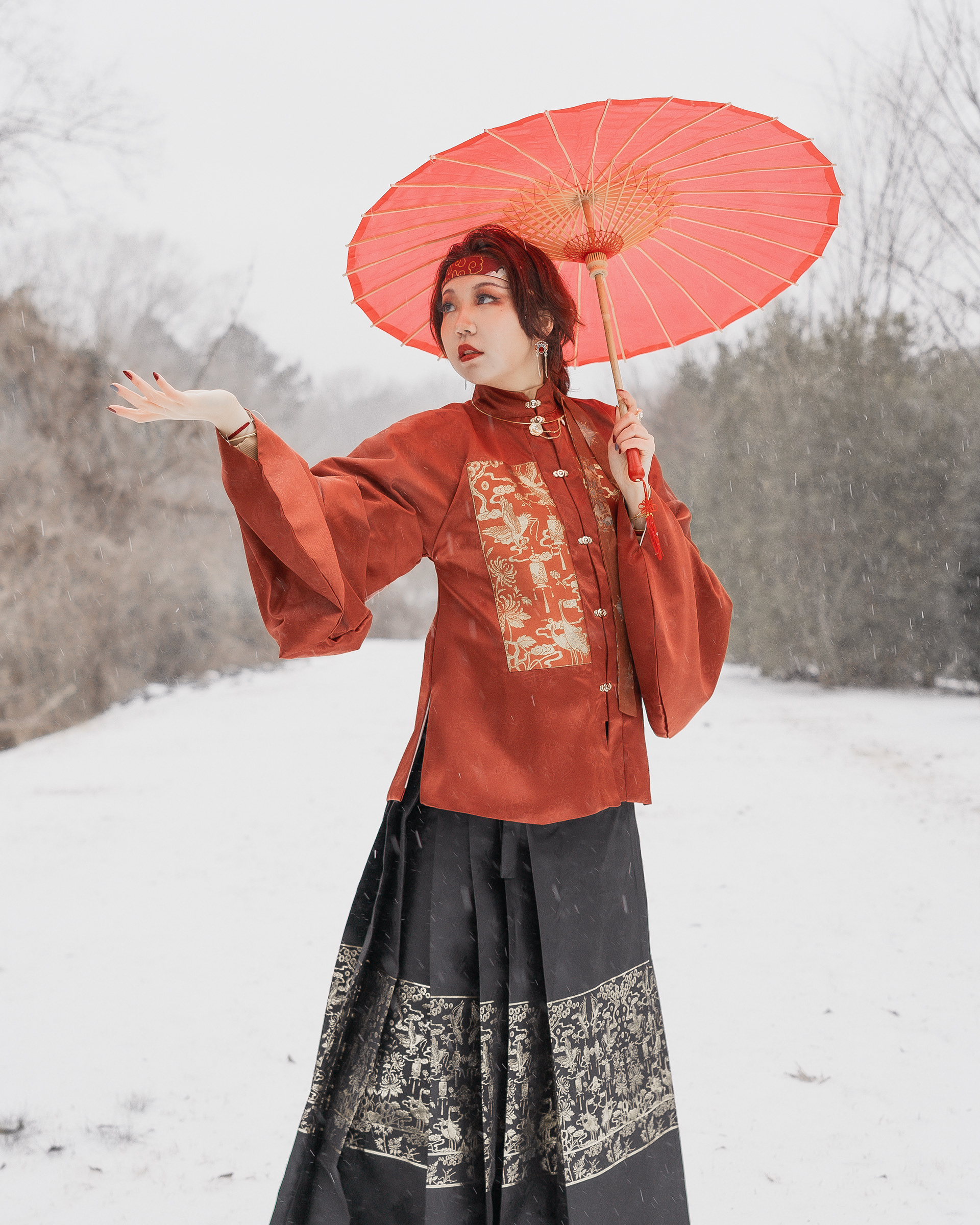





Hanfu is a general term for the traditional clothing that Han Chinese wear. Across time (dynasties), hanfu has different styles due to the function, beauty standards at a particular time, climate, and status of the person wearing it.
In this photoshoot, the model is wearing a Ming dynasty style clothing. The top is a relatively short shirt (some Ming style can go longer) has fronts that go down the middle with symmetrical buttons, a collar that stands halfway on the neck, and big sleeves called Pi Pa Xiu (literally, "sleeve shaped like a pipa instrument"). The style of the skirt is called a Ma Mian Qun.
Red and gold signify a solemness for the social situation that the person wears to; the more usual colors for daily clothings are lighter and usually come in shades of blue and green. However, this specific outfit would not have been worn to the *most* solemn occasions, for which there would have been more elaborate accessories, outer layers, or other add-ons.
The overall style, the pipa sleeves, and the colors indicate that an outfit like this would not be worn everyday or by peasant-class, since the big sleeve opening inhibits everyday function such as farming or chores. (For this reason, Ming style--as with all other traditional styles--also comes in a narrower sleeve that is more suited to the works of the ordinary people.) The big sleeves inhibit even the most mundane action of holding an object (we had a fair share of this experience as we were doing the photoshoot), and someone who did not need to hold an object would imply that they had attendants, which signify their higher social class. The peasantry, which made up of about 80-90 percent of the pan-Chinese population before emperors were overthrown, would not have such attendants, and the women of peasantry would have been working in all kinds of domestic labors like laundering or weaving, thus requiring narrower sleeves.
Nowadays we can wear whatever style we want. The style of traditional clothing no longer indicates our own social class, since textile production has become easier and cheaper. However, the idea of grandness is still present as we shop for cloths.
Disclaimer: the hairstyle, makeup, accessories, and tailoring of this outfit are not meant to be an accurate representation of real Ming dynasty clothing, but a modern interpretation based on archaeological finds.
Model, Makeup, & Style: Sherry Ma
Text: Danise Wu, helped by Sherry Ma